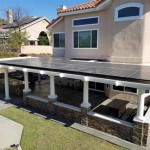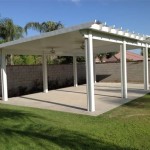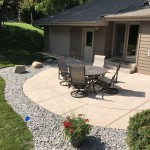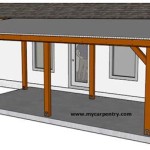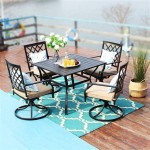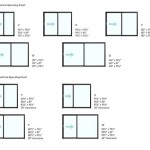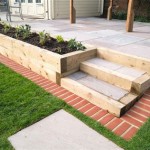Cast Aluminum vs. Steel Patio Furniture: Covers and Cost Considerations
The selection of patio furniture involves multiple factors, including aesthetics, durability, and cost. Two prevalent materials used in patio furniture construction are cast aluminum and steel. Understanding the properties of each material, coupled with the associated costs of furniture covers for protection, is essential for making an informed purchasing decision. This article provides a comprehensive comparison of cast aluminum and steel patio furniture, paying close attention to the influence of material choice on cover selection, pricing, and long-term maintenance expenditures.
Material Properties and Durability
Cast aluminum offers inherent advantages in terms of weight and corrosion resistance. The manufacturing process involves pouring molten aluminum into a mold, creating intricate designs and complex shapes. Aluminum possesses a natural oxide layer that protects the underlying metal from rust, making it suitable for outdoor environments. This inherent corrosion resistance contributes to aluminum furniture lasting for many years with minimal upkeep, particularly when sheltered under adequate patio furniture covers. The lightweight nature of cast aluminum facilitates easy rearrangement of furniture, which is particularly useful for adaptive outdoor spaces. However, aluminum is softer than steel, making it more susceptible to dents and scratches if not handled carefully or properly protected with furniture covers.
Steel, on the other hand, is significantly stronger and more robust than cast aluminum. It is an alloy of iron and carbon, offering greater load-bearing capabilities and resistance to physical damage. Steel furniture can withstand heavier use and is less likely to be affected by strong winds or accidental impacts. However, unprotected steel is vulnerable to rust when exposed to moisture and humidity. Therefore, steel patio furniture typically undergoes a powder coating or galvanization process to enhance its corrosion resistance. Even with these protective coatings, regular maintenance, including cleaning and the use of furniture covers, is necessary to prevent rust formation and prolong the lifespan of steel furniture. The weight of steel furniture can be a disadvantage for those who prefer to move their furniture frequently. The heaviness does however make it more stable in exposed windy locations.
Cost Analysis: Furniture and Covers
The initial purchase price of patio furniture varies depending on the material, design, and brand. Generally, cast aluminum furniture tends to be more expensive than steel furniture of comparable size and design. The higher cost of aluminum reflects its corrosion resistance, lighter weight, and the energy-intensive process required for its production. The intricate casting process also typically adds to the price. The cost increases with the complexity and design of the cast aluminum pieces. Lower end steel usually has a much lower price point than cast aluminum but the quality of the steel and coatings will impact the longevity of the furniture and the necessity for quality furniture covers to protect it.
When factoring in the costs of patio furniture covers, the material of the furniture plays a crucial role in determining the type and quality of cover required. Steel furniture, due to its susceptibility to rust, necessitates high-quality, waterproof, and breathable covers to prevent moisture buildup and subsequent corrosion. Investing in durable, custom-fitted covers for steel furniture can significantly extend its lifespan and reduce the need for frequent replacements. Aluminum furniture, while corrosion-resistant, still benefits from the protection offered by covers, especially in regions with harsh weather conditions. Covers shield aluminum furniture from fading due to UV exposure, accumulation of dirt and debris, and potential scratches. The initial cost difference between aluminum and steel furniture can be somewhat offset by the higher investment required in premium covers for steel furniture.
Another cost consideration involves the long-term maintenance requirements of each material. While aluminum is relatively low-maintenance, occasional cleaning with mild soap and water is recommended to remove dirt and grime. Scratches can be touched up with specialized paints designed for aluminum. Steel furniture requires more diligent maintenance, including regular cleaning, rust removal (if it occurs), and reapplication of protective coatings to prevent corrosion. Furthermore, the cost of rust removal products and protective coatings should be factored into the overall cost of owning steel patio furniture. While the covers will reduce the need for regular maintenance they may not eliminate it altogether.
Patio Furniture Covers: Types and Considerations
The market offers a wide range of patio furniture covers, varying in material, size, and features. Common cover materials include polyester, vinyl, and canvas. Polyester covers are lightweight, water-resistant, and relatively affordable. Vinyl covers provide excellent waterproofing but may lack breathability, potentially leading to moisture buildup under the cover. Canvas covers are durable, breathable, and offer superior protection against the elements, but they are typically more expensive.
Factors to consider when selecting patio furniture covers include the dimensions of the furniture, the local climate, and the desired level of protection. Custom-fitted covers provide the best protection, as they prevent wind from lifting the cover and minimize gaps where moisture or debris can enter. Breathable covers are essential for both aluminum and steel furniture, as they allow moisture to escape, preventing condensation and mildew growth. UV-resistant covers protect the furniture from fading and cracking due to prolonged sun exposure. Reinforced seams and waterproof zippers enhance the durability and weather resistance of the cover. The cost of patio furniture covers varies depending on the material, size, and features, with custom-fitted, high-quality covers commanding a higher price.
For steel furniture, choosing a cover with a PVC or PU lining offers an added layer of waterproofing, which is crucial to prevent rust formation. Similarly, for aluminum furniture, a breathable cover with UV protection will help maintain its appearance and prevent fading over time. It is also worth considering covers with vents to further improve airflow and reduce condensation.
The features of furniture covers significantly impact their cost. Covers with added features, such as integrated vents, buckle straps for secure fastening, weighted hems to prevent lifting, and padded handles for easy handling, typically come with a higher price tag. However, these features can enhance the performance and longevity of the cover, making it a worthwhile investment in the long run. Investing in covers with warranties can provide additional peace of mind and protection against defects or premature wear.
The longevity of patio furniture covers depends on the quality of the materials used, the frequency of use, and the environmental conditions. High-quality covers made from durable materials like canvas or reinforced polyester can last for several years with proper care. Regular cleaning and storage of covers when not in use can extend their lifespan. Replacing damaged or worn-out covers promptly is essential to maintain the protection of the patio furniture. It's important to remember that even the best covers will eventually degrade from UV exposure and general wear and tear, requiring eventual replacement.
Regardless of whether cast aluminum or steel furniture is selected, proper storage of furniture during the off-season is critical. If storage space is available, storing furniture indoors will significantly prolong its lifespan and reduce the need for frequent cleaning and maintenance. If indoor storage is not feasible, covers should be used in conjunction with other protective measures, such as raising the furniture off the ground to improve airflow and prevent water accumulation. Periodic inspection of the furniture and covers for signs of damage or wear is also recommended.

Cast Aluminum Vs Wrought Iron Patio Furniture Which Is Best For You

Comparing Aluminum And Steel Patio Furniture Which Is Right For You Neighbor

Wrought Iron Vs Cast Aluminum Patio Furniture

Comparing Aluminum And Steel Patio Furniture Which Is Right For You Neighbor

Wrought Iron Vs Cast Aluminum Patio Furniture

Cast Aluminum Vs Wrought Iron Patio Furniture Which Is Best For You

Comparing Aluminum And Steel Patio Furniture Which Is Right For You Neighbor

Wrought Iron Vs Cast Aluminum Patio Furniture

Nuu Garden 5 Piece Cast Aluminum Patio Dining Set With Umbrella Hole Outdoor Furniture Round Table Antique Broe Scd005 01a The Home Depot

Wrought Iron Vs Cast Aluminum Patio Furniture
Related Posts

